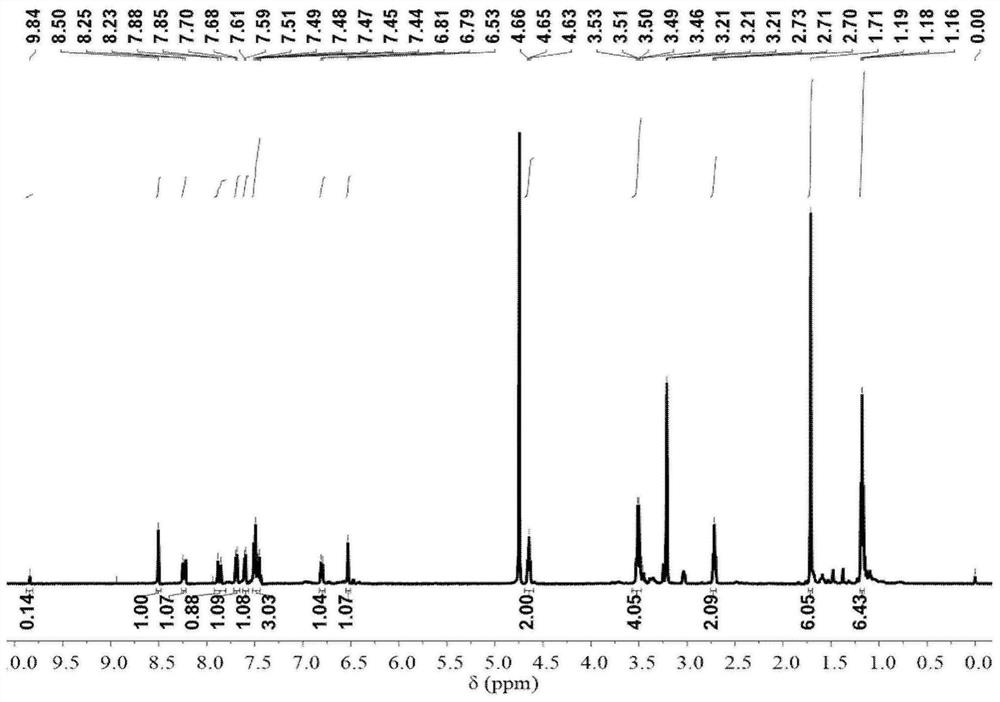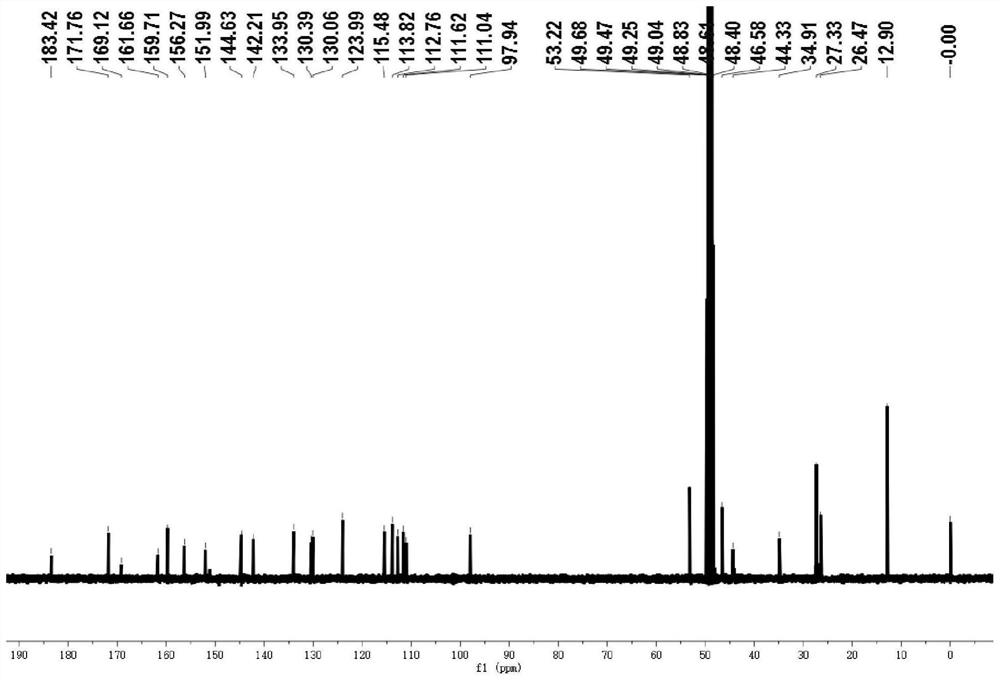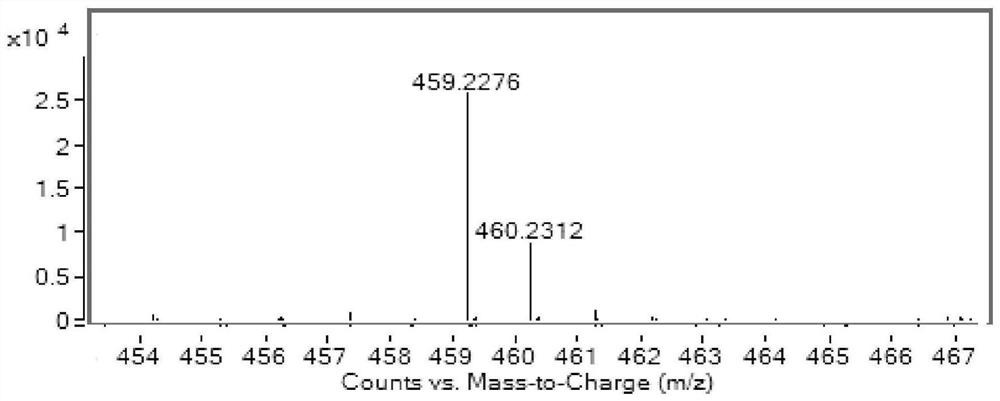Fluorescent probe capable of tracing mitochondria-lysosome interaction in super-resolution mode
A technology of fluorescent probes and mitochondria, which is applied in the field of fluorescent probes, can solve the problems of not being able to provide information on the state changes of organelles, and achieve good cell permeability and excellent effects of non-toxicity
- Summary
- Abstract
- Description
- Claims
- Application Information
AI Technical Summary
Problems solved by technology
Method used
Image
Examples
Embodiment 1
[0028] Embodiment 1: the preparation of fluorescent probe Coupa:
[0029] References Wu J, Liu W, Zhuang X, et al. Fluorescence turn on of coumarinderivatives by metal cations: a new signaling mechanism based on C=Nisomerization, Org. Lett. 2007, 9, 33-36. Compound 1 was prepared.
[0030] Reference Li X, Wang Y, Matsuura T, Meng J, Synthesis of new spiropyrans and spirooxazines having a heteroaromatic pendant and their photochromic behavior, Heterocycles 1999, 51, 2639-2651. Compound 2 was prepared.
[0031] Compound 1 ((245 mg, 1.0 mmol)) and compound 2 (359 mg, 1.0 mmol) were mixed in 10 ml of acetonitrile. After the solution was stirred at reflux overnight, the solvent was evaporated under reduced pressure. The crude product was separated by gel chromatography with CH as eluent 2 Cl 2 / CH 3 OH (50 / 1, v / v), finally obtain dark blue product Coupa, yield 40%, and use 1 H NMR, 13 C NMR and HR-MS characterized its structure as Figure 1-3 .
[0032]
Embodiment 2
[0033] Embodiment 2: Coupa spectroscopic characterization in vitro
[0034] Use Na 2 S as H 2 S donor and Na 2 SO 3 as SO 2 The donor mimics the microenvironment of mitochondrial reactive sulfur species (RSS) and detects fluorescence spectra excited at 405nm and 560nm. Prepare 3 mL of PBS / DMSO=10 / 1 probe solution with a concentration of 10 μM, and add 10 equivalents of active sulfur species Na 2 S and Na 2 SO 3 , to detect the spectral behavior of the probe solution. The result is as Figure 4 a(Na 2 S) and Figure 4 b(Na 2 SO 3 ), the results showed that under the two RSS conditions, the fluorescence intensity of the merocyanine system (560nm excitation, 650nm emission) decreased significantly, while the fluorescence intensity of the coumarin system (405nm excitation, 480nm emission) did not change. Considering the microenvironment of the mitochondrial active sulfur species (RSS), the fluorescence intensity of the fluorescent probe cyanine system of the present inv...
Embodiment 3
[0036] The fluorescence spectrum of Coupa under the different viscosity of embodiment 3
[0037] Using 0-80% (V / V) glycerol binary solution in methanol to simulate different viscosities, investigate the fluorescence spectrum of Coupa under excitation at 405nm and 560nm. First, prepare 3 mL of glycerol / methanol binary solutions with different ratios, then add 10 μM probes to them, vortex and mix thoroughly, and then use a fluorescence spectrometer to excite at 405 nm and 560 nm respectively to obtain fluorescence spectra. like Figure 5 As shown, the results show that at 405nm ( Figure 5 a) and 560nm ( Figure 5 b) Under excitation, the fluorescence emission increases with the viscosity, indicating that the fluorescence intensity is positively correlated with the viscosity.
PUM
 Login to View More
Login to View More Abstract
Description
Claims
Application Information
 Login to View More
Login to View More - R&D
- Intellectual Property
- Life Sciences
- Materials
- Tech Scout
- Unparalleled Data Quality
- Higher Quality Content
- 60% Fewer Hallucinations
Browse by: Latest US Patents, China's latest patents, Technical Efficacy Thesaurus, Application Domain, Technology Topic, Popular Technical Reports.
© 2025 PatSnap. All rights reserved.Legal|Privacy policy|Modern Slavery Act Transparency Statement|Sitemap|About US| Contact US: help@patsnap.com



